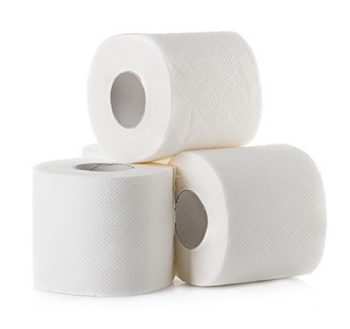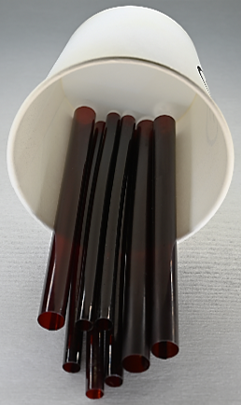FOR IMMEDIATE RELEASE
“Per- and Polyfluoroalkyl Substances in Toilet Paper and the Impact on Wastewater Systems ”
Environmental Science & Technology Letters

Wastewater can provide clues about a community’s infectious disease status, and even its prescription and illicit drug use. But looking at sewage also provides information on persistent and potentially harmful compounds, such as per- and polyfluoroalkyl substances (PFAS), that get released into the environment. Now, researchers in ACS’ Environmental Science & Technology Letters report an unexpected source of these substances in wastewater systems — toilet paper.
PFAS have been detected in many personal care products, such as cosmetics and cleansers, that people use every day and then wash down the drain. But not many researchers have considered whether toilet paper, which also ends up in wastewater, could be a source of the chemicals. Some paper manufacturers add PFAS when converting wood into pulp, which can get left behind and contaminate the final paper product. In addition, recycled toilet paper could be made with fibers that come from materials containing PFAS. So, Timothy Townsend and colleagues wanted to assess this potential input to wastewater systems, and test toilet paper and sewage for these compounds.
The researchers gathered toilet paper rolls sold in North, South and Central America; Africa; and Western Europe and collected sewage sludge samples from U.S. wastewater treatment plants. Then they extracted PFAS from the paper and sludge solids and analyzed them for 34 compounds. The primary PFAS detected were disubstituted polyfluoroalkyl phosphates (diPAPs) — compounds that can convert to more stable PFAS such as perfluorooctanoic acid, which is potentially carcinogenic. Specifically, 6:2 diPAP was the most abundant in both types of samples but was present at low levels, in the parts-per-billion range.
Then, the team combined their results with data from other studies that included measurements of PFAS levels in sewage and per capita toilet paper use in various countries. They calculated that toilet paper contributed about 4% of the 6:2 diPAP in sewage in the U.S. and Canada, 35% in Sweden and up to 89% in France. Despite the fact that North Americans use more toilet paper than people living in many other countries, the calculated percentages suggest that most PFAS enter the U.S. wastewater systems from cosmetics, textiles, food packaging or other sources, the researchers say. They add that this study identifies toilet paper as a source of PFAS to wastewater treatment systems, and in some places, it can be a major source.
The authors acknowledge funding from the Hinkley Center for Solid and Hazardous Waste Management.
###
The American Chemical Society (ACS) is a nonprofit organization chartered by the U.S. Congress. ACS’ mission is to advance the broader chemistry enterprise and its practitioners for the benefit of Earth and all its people. The Society is a global leader in promoting excellence in science education and providing access to chemistry-related information and research through its multiple research solutions, peer-reviewed journals, scientific conferences, eBooks and weekly news periodical Chemical & Engineering News. ACS journals are among the most cited, most trusted and most read within the scientific literature; however, ACS itself does not conduct chemical research. As a leader in scientific information solutions, its CAS division partners with global innovators to accelerate breakthroughs by curating, connecting and analyzing the world’s scientific knowledge. ACS’ main offices are in Washington, D.C., and Columbus, Ohio.
To automatically receive press releases from the American Chemical Society, contact newsroom@acs.org.
Note: ACS does not conduct research, but publishes and publicizes peer-reviewed scientific studies.





